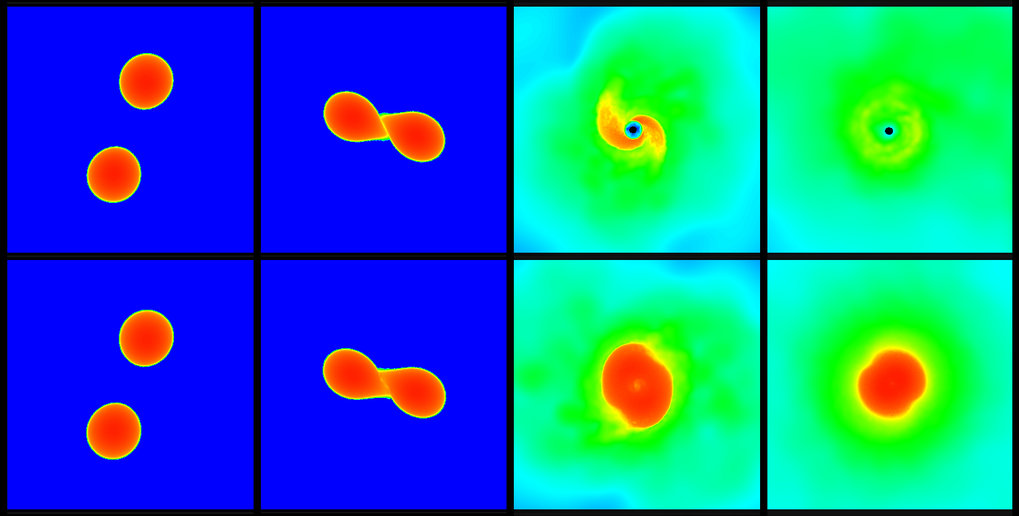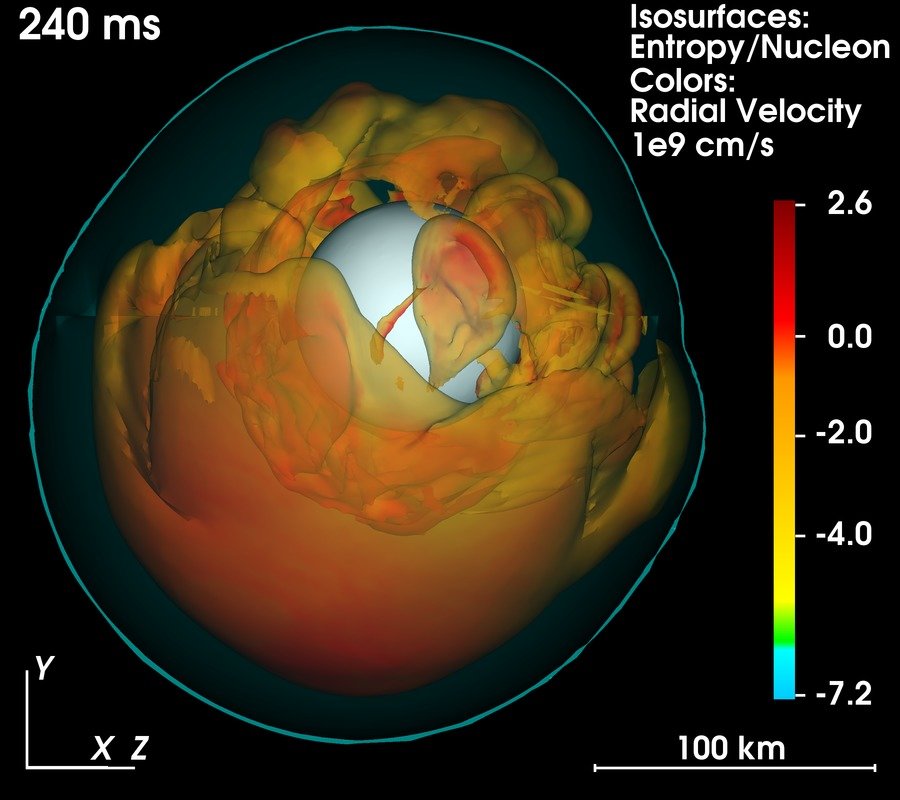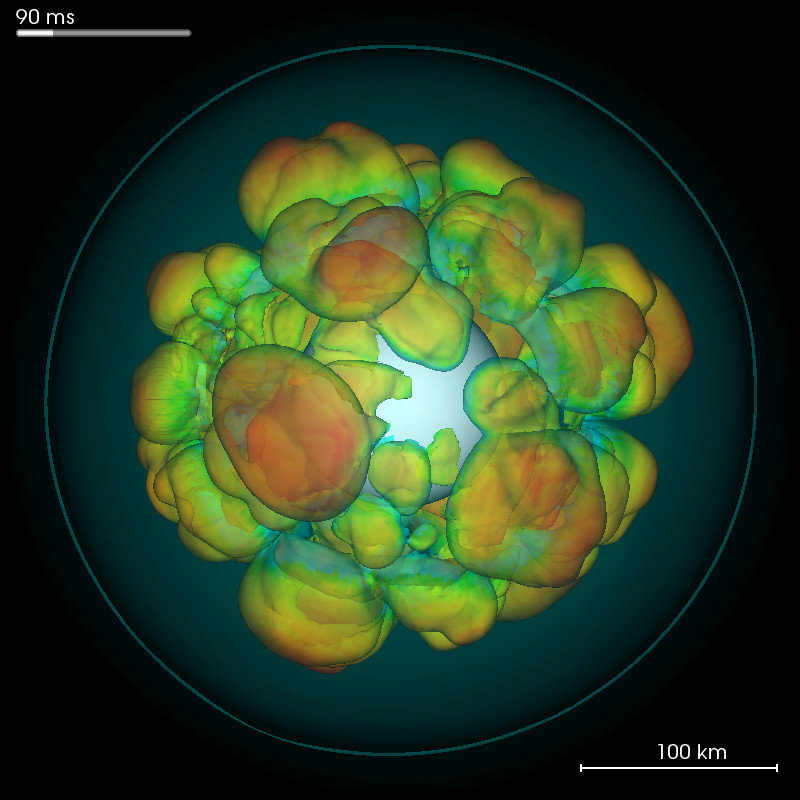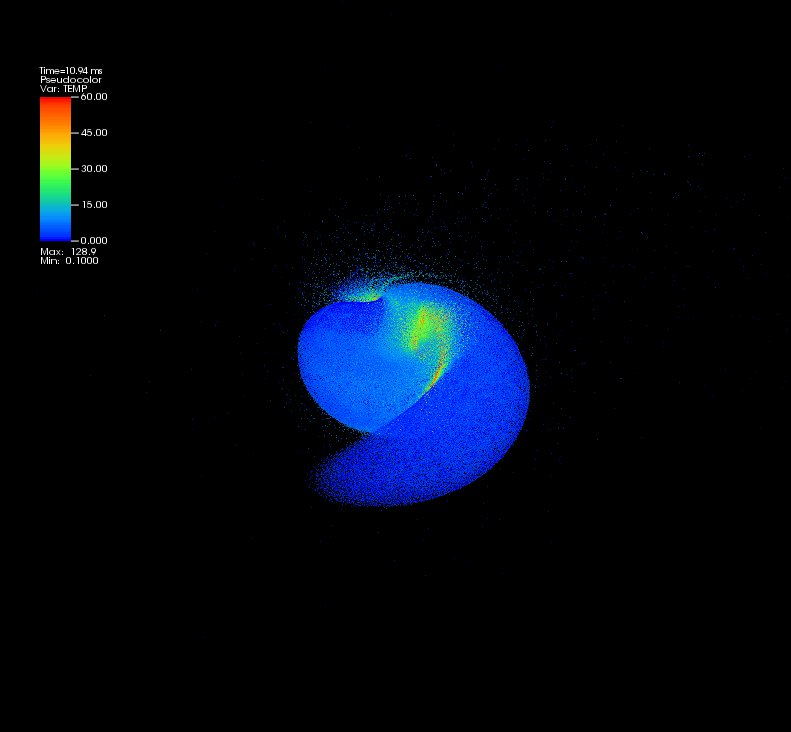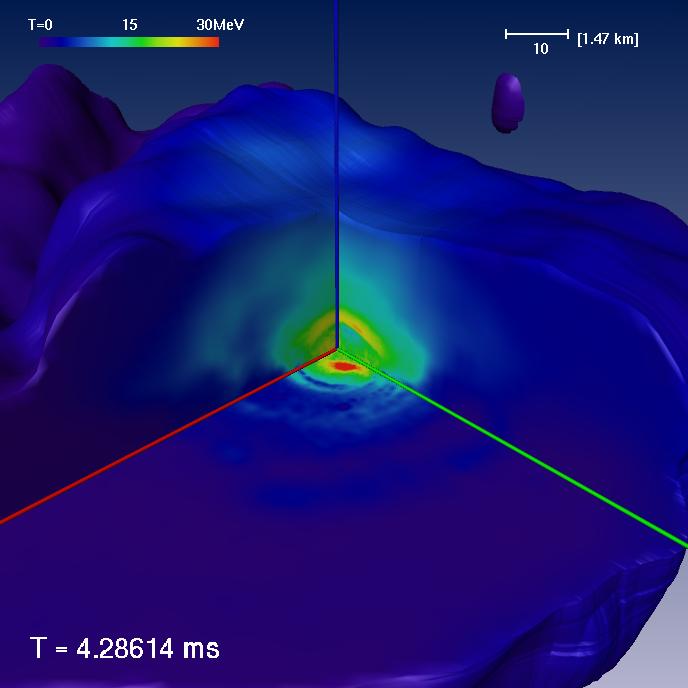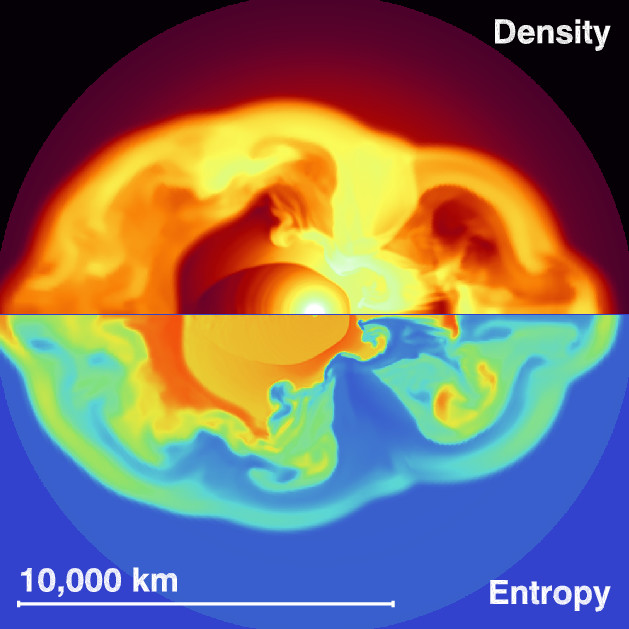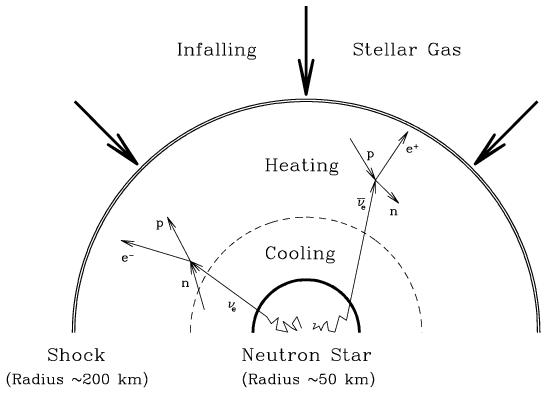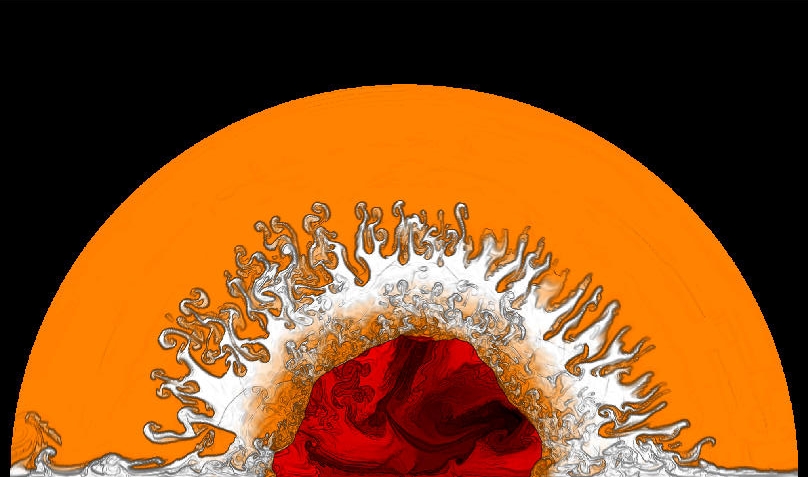Scientific Research
From the Series Current Research Highlights at MPA
Neutron Stars on the Brink of Collapse - January 2018Neutron stars are the densest objects in the Universe; however, their exact characteristics remain unknown. Using recent observations and simulations, an international team of scientists including researchers at the Max Planck Institute for Astrophysics (MPA) has managed to narrow down the size of these stars. Thus the scientists were able to exclude a number of theoretical descriptions for the neutron star matter. Andreas Bauswein, Hans-Thomas Janka, Oliver Just |
Bridging the Gap: From Massive Stars to Supernovae in 3D - November 2017A team of astrophysicists from Queen’s University Belfast, the Max Planck Institute for Astrophysics (MPA), and Monash University (Australia) has, for the first time, performed three-dimensional computer simulations that follow the evolution of a massive star from its final phase of nuclear burning, through the collapse of the stellar iron core, into the first seconds of the beginning explosion as a supernova. The simulations show that the large-scale violent convective motions that stir the oxygen burning layer at the onset of collapse can provide crucial support for the explosion of the star. Bernhard Müller, Hans-Thomas Janka |
Three-dimensional computer simulations support neutrinos as cause of supernova explosions - August 2015Latest three-dimensional computer simulations are closing in on the solution of an decades-old problem: how do massive stars die in gigantic supernova explosions? Since the mid-1960s, astronomers thought that neutrinos, elementary particles that are radiated in huge numbers by the newly formed neutron star, could be the ones to energize the blast wave that disrupts the star. However, only now the power of modern supercomputers has made it possible to actually demonstrate the viability of this neutrino-driven mechanism. Hans-Thomas Janka |
Computer simulation confirms supernova mechanism in three dimensions - April 2015Massive stars explode as supernovae at the end of their lives, but how exactly does the explosion begin and what is the role of different physical processes? For the first time, scientists at the Max Planck Institute for Astrophysics have been able to simulate such a stellar explosion in all three dimensions with detailed physical input. The results show that the energetic neutrinos radiated by the newly formed neutron star indeed trigger the explosion by heating the stellar matter. Turbulent flows support this process and lead to an even more energetic explosion. Hans-Thomas Janka |
A new neutrino-emission asymmetry in forming neutron stars - October 2014The neutron star that is born at the center of a collapsing and exploding massive star radiates huge numbers of neutrinos produced by particle reactions in the extremely hot and dense matter. Three-dimensional supercomputer simulations at the very forefront of current modelling efforts reveal the stunning and unexpected possibility that this neutrino emission can develop a hemispheric (dipolar) asymmetry. If this new neutrino-hydrodynamical instability happens in nature, it will have important consequences for the formation of chemical elements in stellar explosions, for imparting kicks to the neutron star, and for the perspective of detecting neutrinos from a future galactic supernova. Hans-Thomas Janka |
Cosmic Vibrations from Neutron Stars - February 2012In the collision of neutron stars, the extremely compact remnants of evolved and collapsed stars, two light stars merge to one massive star. The newly-born heavyweight vibrates, sending out characteristic waves in space-time. Model calculations at the Max Planck Institute for Astrophysics now show how such signals can be used to determine the size of neutron stars and how we can learn more about the interior of these exotic objects. Hans-Thomas Janka |
Are Neutron Stars Strange? - November 2009The state of matter in the interior of neutron stars, the ultra-dense remnants of collapsed stars, is still one of the biggest unsolved riddles of astrophysics. Researchers at the Max Planck Institute for Astrophysics together with colleagues from the Universities in Frankfurt, Heidelberg, and Jena perform computer simulations of the violent collisions of such stars to determine signals that could help to unravel this mystery. Andreas Bauswein, Hans-Thomas Janka |
New predictions encourage the extragalactic search for gravitational waves from supernovae - February 2007Predicted by Einstein more than 80 years ago, gravitational waves come finally into the range of detectability. One prospective source of these waves is the collapsing stellar core in a supernova event. Challenged by the smallness of the expected signal strength, astrophysicists try pave the road towards a possible detection with accurate predictions. Recent supercomputer simulations reveal novel ways to tackle this tricky problem. These techniques could enable an extragalactic search for gravitational waves from supernovae, which would increase the prospective event rate to a viable level. H. Dimmelmeier, H.-T. Janka, A. Marek, E. Müller |
The Supernova that Made the Crab Nebula - July 2006Researchers at the Max Planck Institute for Astrophysics have solved the puzzle how the Crab Nebula was formed. Their elaborate computer simulations demonstrate that the expanding cloud of gas is the debris of a ten times more massive star than the Sun, whose explosion was driven by the powerful heating of neutrinos. These elementary particles were radiated in huge numbers when the stellar core collapsed to a neutron star. F.S. Kitaura, H.-Th. Janka, R. Buras, A. Marek, W. Hillebrandt |
Short Gamma-Ray Bursts: Death Throes of Merging Neutron Stars - October 2005Using computer simulations for solving Einstein's equations of General Relativity, researchers at the Max-Planck Institute for Astrophysics study the cosmic catastrophies when binary neutron stars collide. The simulations confirm such events as possible sources of the short gamma-ray bursts whose distance has recently been determined by observations with the HETE and Swift satellites. R. Oechslin, H.-Th. Janka |
Short Gamma-Ray Bursts - New Models Shed Light on Enigmatic Explosions - September 2004Researchers at the Max-Planck-Institute for Astrophysics have developed new relativistic models which allow predictions of so far unknown properties of short gamma-ray bursts. Their simulations will come under scrutiny by the Swift Gamma-Ray Burst Explorer, a NASA mission that is scheduled for launch in the fall of 2004. H.-Thomas Janka, M.A. Aloy, E. Müller |
Neutron Stars as Cannonballs - October 2003Scientists at the Max-Planck-Institute for Astrophysics in Garching and the University of Chicago have substantiated an explanation for the high space velocities of observed pulsars. Their computer models confirm the likely connection with asymmetries during supernova explosions. Hans-Thomas Janka, Konstantinos Kifonidis, Ewald Müller, Leonhard Scheck, Tomek Plewa |
Supernova Simulations Still Defy Explosions - June 2003Researchers at the Max-Planck-Institute for Astrophysics have performed the worldwide most advanced computer simulations of the gravitational collapse of massive, evolved stars. Although the crucial interactions of elementary particles were followed with unprecedented accuracy, the models fail to produce the expected supernova explosions. Robert Buras, Konstantinos Kifonidis, Markus Rampp and Hans-Thomas Janka |
How do Massive Stars Explode? - February 2001A simple, analytic model was developed at the Max-Planck-Institute for Astrophysics to discuss the complex processes which cause the supernova explosions of massive stars. The model helps one understanding the role of neutrinos for the explosion, and supplements more detailed, but also less transparent, supercomputer calculations. Hans-Thomas Janka |
Nucleosynthesis and Instabilities in Core Collapse Supernovae - November 1999On February 23rd, 1987, astronomers became witnesses of a gigantic supernova explosion in the Large Magellanic Cloud. This supernova, named SN 1987 A, terminated the life of Sk -69 202, a blue supergiant star, about 15-20 times more massive than our Sun. K. Kifonidis, T. Plewa, H.-Th. Janka, E. Müller |

